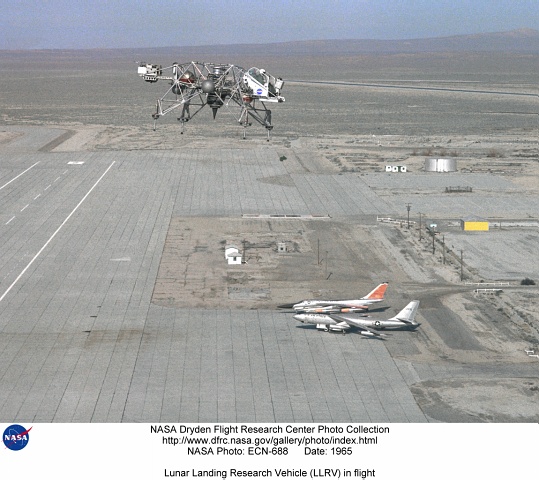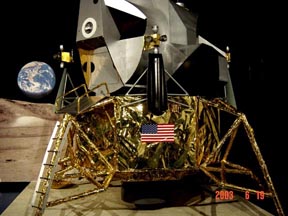


 |
 |
 |

Barnes joined the X-15 program as a civilian contractor for NASA. The NASA High Range Tracking stations were located at Ely and Beatty  Nevada with main control being at Dryden/Edwards AFB in California. I was assigned to the tracking station at Beatty, Nevada as part of a crew consisting of a Station Manager, a Technical Advisor, and field engineers for the Mod-2 Radar, Data Transmission System, Communications, Telemetry, and Plant Maintenance/Generators. NASA had a site monitor at each tracking station to monitor our contractor operations.
Nevada with main control being at Dryden/Edwards AFB in California. I was assigned to the tracking station at Beatty, Nevada as part of a crew consisting of a Station Manager, a Technical Advisor, and field engineers for the Mod-2 Radar, Data Transmission System, Communications, Telemetry, and Plant Maintenance/Generators. NASA had a site monitor at each tracking station to monitor our contractor operations.
Though supporting flights of the X-15 was our main objective, they also participated in flights of the XB-70, the Lifting Bodies, an occasional A-12/SR-71 Blackbird flight, and the experimental Lunar Landing vehicles depicted below.

The LLRVs, humorously referred to as "flying bedsteads," were created by a predecessor of NASA's Dryden Flight Research Center to study and analyze piloting techniques needed to fly and land the tiny Apollo Lunar Module in the moon's airless environment. (Dryden was known as NASA's Flight Research Center from 1959 to 1976.)
Success of the LLRVs led to the building of three Lunar Landing Training Vehicles (LLTVs) used by Apollo astronauts at the Manned Spacecraft Center, Houston, Texas, predecessor of NASA's Johnson Space Center.
Apollo 11 astronaut, Neil Armstrong - first human to step onto the moon's surface - said the mission would not have been successful without the type of simulation that resulted from the LLRVs and LLTVs.
When Apollo planning was underway in 1960, NASA was looking for a simulator to profile the descent to the moon's surface. Three concepts were developed: an electronic simulator, a tethered device, and the ambitious Flight Research Center (FRC) contribution, a free-flying vehicle. All three became serious projects, but eventually the FRC's LLRV became the most significant one. Hubert Drake is credited with originating the idea, while Donald Bellman and Gene Matranga were senior engineers on the project, with Bellman the project manager.
After conceptual planning and meetings with engineers from Bell Aerosystems, Buffalo, N.Y., a company with experience in vertical takeoff and landing (VTOL) aircraft, NASA issued Bell a $50,000 study contract in December 1961. Bell had independently conceived a similar, free-flying simulator, and out of this study came the NASA Headquarters' endorsement of the LLRV concept, resulting in a $3.6 million production contract awarded to Bell on Feb. 1, 1963, for delivery of the first of two vehicles for flight studies at the FRC within 14 months.
Built of aluminum alloy trusses and shaped like a giant four-legged bedstead, the vehicle was to simulate a lunar landing profile. To do this, the LLRV had a General Electric CF-700-2V turbofan engine mounted vertically in a gimbal, with 4,200 pounds of thrust. The engine got the vehicle up to the test altitude and was then throttled back to support five-sixths of the vehicle's weight, simulating the reduced gravity of the moon. Two hydrogen peroxide lift rockets with thrust that could be varied from 100 to 500 pounds handled the LLRV's rate of descent and horizontal movement. Sixteen smaller hydrogen peroxide rockets, mounted in pairs, gave the pilot control in pitch, yaw and roll. As safety backups on the LLRV, six 500-pound rockets could take over the lift function and stabilize the craft for a moment if the main jet engine failed. The pilot had a zero-zero ejection seat that would then lift him away to safety.
Vehicle No. 1. It was first readied for captured flight on a tilt table constructed at the FRC to test the engines without actually flying. The scene then shifted to the old South Base area of Edwards. On the day of the first flight, Oct. 30, 1964, research pilot Joe Walker flew it three times for a total of just under 60 seconds to a peak altitude of ten feet (3 m). Later flights were shared between Walker; another Dryden pilot, Don Mallick; the Army's Jack Kleuver; and NASA Manned Spacecraft Center pilots Joseph Algranti and H.E. "Bud" Ream.
NASA had accumulated enough data from the LLRV flight program at the FRC by mid-1966 to give Bell a contract to deliver three LLTVs at a cost of $2.5 million each.
In December 1966 vehicle No. 1 was shipped to Houston, followed by No. 2 in January 1967, within weeks of its first flight. Modifications already made to No. 2 had given the pilot a three-axis side control stick and a more restrictive cockpit view, both features of the real Lunar Module that would later be flown by the astronauts down to the moon's surface.
When the LLRVs arrived at Houston, where research pilots would learn how to become LLTV instructor pilots, No. 2 had been flown just 7 times while No. 1, the veteran, had a total of 198 flights. In December 1967, the first of the LLTVs joined the FRC's LLRVs to eventually make up the five-vehicle training and simulator fleet.
Three of the five vehicles were later destroyed in crashes at Houston-LLRV No. 1 in May 1968 and two LLTVs, in December 1968 and January 1971.
The two accidents in 1968, before the first lunar landing, did not deter Apollo program managers who enthusiastically relied on the vehicles for simulation and training.
Donald "Deke" Slayton, then NASA's astronaut chief, said there was no other way to simulate a moon landing except by flying the LLTV.
LLRV No. 2 was eventually returned to Dryden, where it is on display as a silent artifact of the Center's contribution to the Apollo program.
| Crash | Misc 1 | Misc 2 | Misc 3 | Misc 4 | Misc 5 | Misc 6 |
The LLRV project linked above paved the way for the following:

Webmaster note: In 1967 Barnes spent a few months at the Flight Dynamics Laboratory at Wright Patterson AFB performing structure integrity tests on the Apollo 1 Space Capsule. The capsule below is him the at Astronaut and Air Force Lt. Gen. Thomas P. Stafford's museum in Weatherford, Oklahoma. Ironically, Gen. Stafford was one of the pilots of the Soviets MiGs while he was at Area 51 for Projects Have Drill and Have Doughnut.
 |
 |
 |